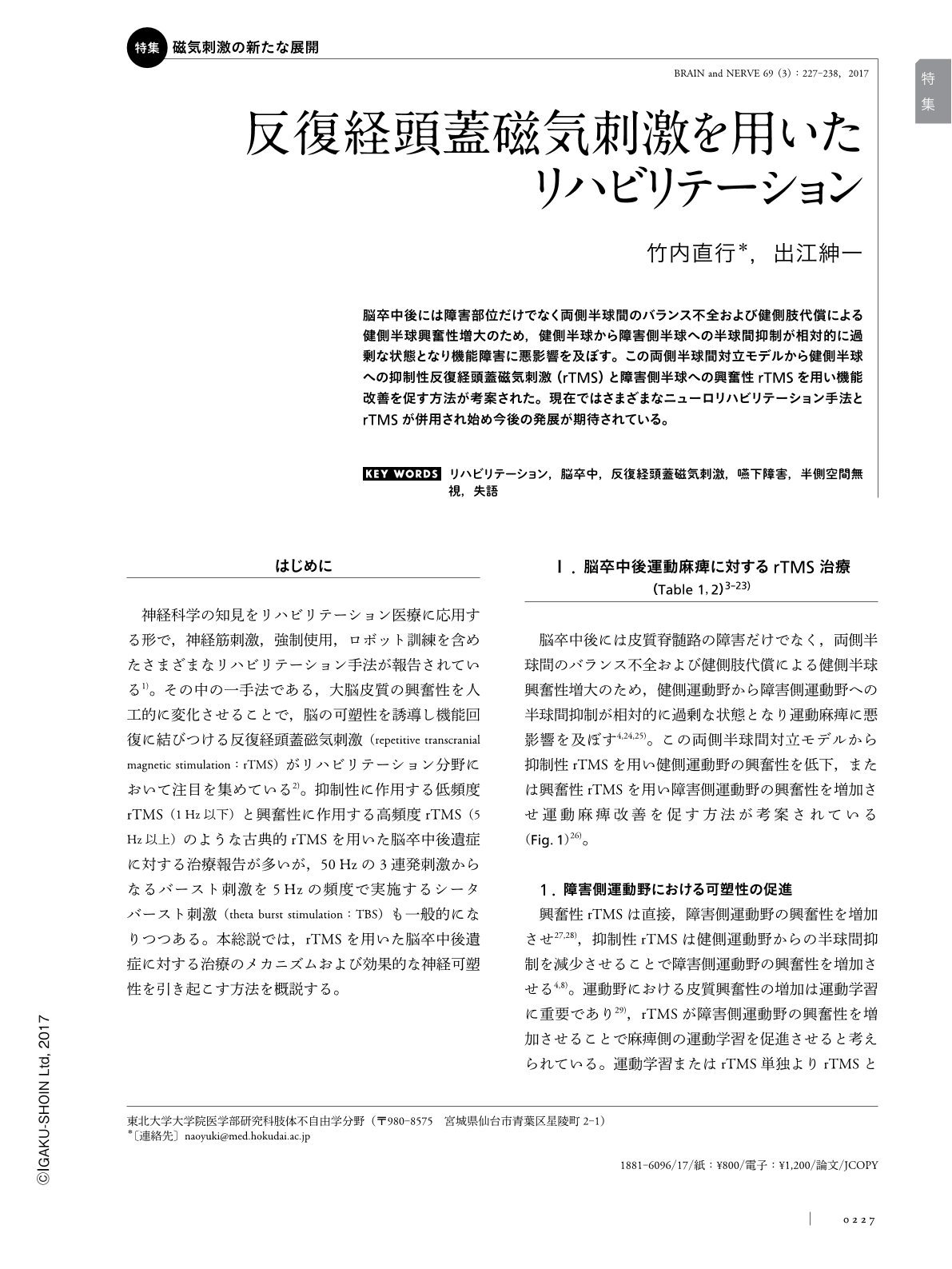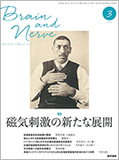Japanese
English
- 有料閲覧
- Abstract 文献概要
- 1ページ目 Look Inside
- 参考文献 Reference
脳卒中後には障害部位だけでなく両側半球間のバランス不全および健側肢代償による健側半球興奮性増大のため,健側半球から障害側半球への半球間抑制が相対的に過剰な状態となり機能障害に悪影響を及ぼす。この両側半球間対立モデルから健側半球への抑制性反復経頭蓋磁気刺激(rTMS)と障害側半球への興奮性rTMSを用い機能改善を促す方法が考案された。現在ではさまざまなニューロリハビリテーション手法とrTMSが併用され始め今後の発展が期待されている。
Abstract
Various novel stroke rehabilitative methods have been developed based on findings in basic science and clinical research. Recently, many reports have shown that repetitive transcranial magnetic stimulation (rTMS) improves function in stroke patients by altering the excitability of the human cortex. The interhemispheric competition model proposes that deficits in stroke patients are due to reduced output from the affected hemisphere and excessive interhemispheric inhibition from the unaffected hemisphere to the affected hemisphere. The interhemispheric competition model indicates that improvement in deficits can be achieved either by increasing the excitability of the affected hemisphere using excitatory rTMS or by decreasing the excitability of the unaffected hemisphere using inhibitory rTMS. Recovery after stroke is related to neural plasticity, which involves developing new neural connections, acquiring new functions, and compensating for impairments. Artificially modulating the neural network by rTMS may induce a more suitable environment for use-dependent plasticity and also may interfere with maladaptive neural activation, which weakens function and limits recovery. There is potential, therefore, for rTMS to be used as an adjuvant therapy for developed neurorehabilitation techniques in stroke patients.

Copyright © 2017, Igaku-Shoin Ltd. All rights reserved.


